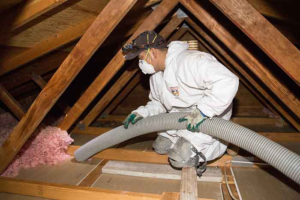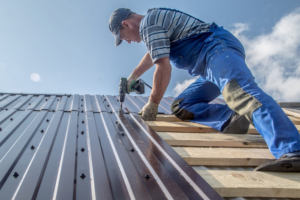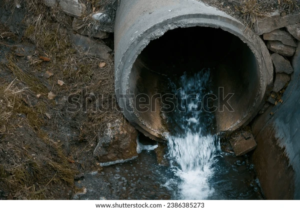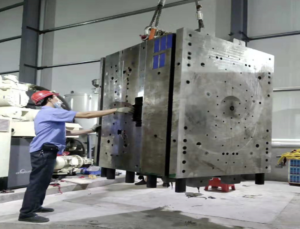Dog Trainer Durham helps owners better communicate with their pets and correct behaviors. Dog training is a very complex job that requires a lot of learning and trial-and-error.

Look for a trainer who uses methods that are force-free and cause minimal stress to the dog. Avoid any trainer who showcases dogs wearing collars like choke chains or prong collars.
A good Dog Trainer is aware of a wide variety of training methods, and knows how to use them in different situations. They will choose the method that is most likely to get the desired behavior from the dog while remaining safe for both the pet and the trainer.
Positive reinforcement training is a popular training technique that uses treats or other rewards to encourage desirable behaviors. This training method is effective in teaching obedience commands, and can also help dogs learn how to behave calmly and appropriately around people and other animals. This type of training also works well with impulsive behaviors, such as jumping or running off to chase a distraction.
Classical conditioning is a training method that involves associating a command word with the action it represents. For example, a trainer may use a hand signal and treat to reinforce the correct behavior of sitting when they give a command for the animal to sit. This type of training is often used to teach basic obedience commands, as well as impulse control (stopping dogs from reacting impulsively, such as running into doors or chasing cars).
Negative punishment involves rewarding the absence of a behavior by withholding something the animal likes. For this method to work, the dog must care about the reward being removed, and it must be able to understand that the removal is due to its behavior. This can be a dangerous technique with food-aggressive dogs, and carries a high risk of injury for both the animal and the handler.
Balanced training is a style of training that seeks to combine positive and negative reinforcement techniques with the principles of classical conditioning. This approach focuses on building trust and respect between the dog and its owner, creating clear communication, and developing leadership. It is also based on the understanding that dogs are social creatures and need to be part of a family unit.
While this training technique is not as common as the other two, some trainers are skilled in using a combination of positive reinforcement and aversive punishment-based training. This training approach is sometimes called LIMA, or “least intrusive, minimally aversive.” This type of training requires a deep understanding of the nature of dogs and their behaviour, including operant and classical conditioning.
Punishment
Punishment involves adding an aversive stimulus to decrease the likelihood of an undesired behavior occurring. Examples are leash jerks or alpha rolls, verbal corrections (‘no’), physical corrections like hitting or putting the dog into a crate and, in some cases, shock collars for excessive barking. Punishment should always be used with caution and under a professional trainer because of its risks, which include fear, stress, anxiety and aggression.
A common problem with punishment is that it doesn’t take into account the environment in which the behavior occurs. It is often applied at the wrong time – e.g., a dog jumping on visitors is punished after it has already jumped on them once. This makes the dog more aroused and the behaviour is likely to recur.
Another problem with punishment is that it can be applied incorrectly, or even applied when the dog does not understand what is being asked of them. For example, a dog may jump up on visitors while their owner is standing in front of them. The trainer may then give a quick leash correction, which stops the dog’s jumping, but does not realize that the dog is still in an aroused state and will soon jump again.
Using punishment when the dog does not understand what it is being asked of can also lead to frustration and the owner becoming angry with their dog. This can cause the training to be withdrawn and, in some cases, leads to aggressive or defensive behaviour.
Often, the underlying reason for a dog’s behaviour is actually fear or insecurity, not dominance, stubbornness or aggression. Changing how the dog feels to help change the behaviour is the best approach. This may be done through reward based training, using a calming diffuser for fearful dogs or, in more serious cases, through a variety of methods, including positive reinforcement, counter conditioning and aversion therapy. These approaches are all more effective than punishing a fearful dog. They are also much safer and more humane for both the dog and its handler. Lastly, using punishment with fearful or anxious dogs can make the problem worse by increasing their anxiety and fear.
Reward System
Rewarding is one of the most powerful tools a Dog Trainer has. It is used to reinforce behaviors that we would like to see repeated and it is also used to help correct unwanted behaviors. Rewards can be anything from food, toys or play to verbal praise and petting. They can be offered at different levels of value and even paired together for a huge impact. The only downside to using treats is that they can sometimes be a distraction and can slow down the training process. This is why it is important to start with a food reward and gradually fade it into a motivator that may be more appropriate for the behavior you are trying to train.
For example, if your dog is struggling with a Stay you can move from luring (marking + feeding) into rewarding by simply removing the treat after the dog performs a successful Stay. This can be done over several repetitions to produce very fast results and ensure that the dog understands what is expected of them. You can then progress to using other reinforcers, such as access to something they want or play with you, which is more suitable for longer searches.
This can be very effective, especially in building independence and hunt drive in a detection dog. It is also important to evaluate your dog and their level of enjoyment as they are working the search. Not every dog loves hunting as much as their owner expects them to, so if you find that your dog is going through the motions on a hunt then it is important to make changes.
One of the best ways to get a dog back into the game is to change up your reinforcement system. Often a dog will get bored with a particular task if they receive the same reward each time, even if it is only a single treat. If you have a solid grading scale in place, you can vary the frequency of your reward for specific behaviors to give them new motivation and keep them engaged. For instance, if you are working on a 20 second Stay you can use a Jackpot reward of several high value treats in a row after it is performed to keep the dog engaged and motivated to improve that skill.
Communication
Training a dog requires clear and consistent communication with the animal. This can be done with verbal cues (such as “sit” or “stay”), as well as non-verbal communication with the trainer’s body language and voice. A trainer who communicates effectively with their clients will be able to set them up for success, and they will be more likely to see positive outcomes with their dogs.
Good communication with an animal isn’t a product that can be purchased in a pet store, and it isn’t something that can be sprayed on a collar. Instead, it is about valuing an animal, teaching them, giving them opportunities to succeed, and providing rewards for those successes.
A trainer’s ability to understand a dog’s body language is important for communicating with the animal and setting them up for success. For example, if a dog is panting heavily it may mean that they are very hot and need to cool off. If a dog is barking and lunging, it may be because they are feeling threatened or are excited about an upcoming event. Finally, if a dog is whining it could be because they need to go outside for a potty break or because they want some attention from their owner.
Keeping the client up to date on how their dog is progressing is also an important part of communication with the animal. This can help the owner stay motivated, and it can also give the trainer an opportunity to correct any incorrect behaviors that the owner may be unintentionally reinforcing. It is also a great way to build trust with the client.
Finally, a good trainer will be honest about how they feel about the dog’s behavior. If the dog is not responding to commands or is having trouble in a particular environment, the trainer should tell the client that and offer some options for moving forward with the training.
When choosing a Dog Trainer, take your time and do some research. Look for a trainer with memberships to organizations that share your ethics, and certifications that show that they have the experience necessary to train dogs in various situations. If you have any special circumstances, such as a fearful or aggressive dog, make sure to tell the trainer so they can put safety precautions in place for everyone’s safety.







